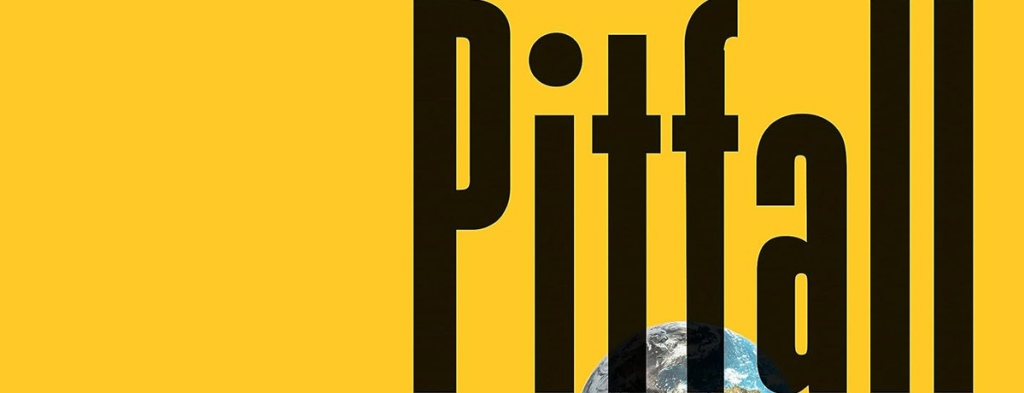
Book review: Pitfall, by Christopher Pollon

By Jeremy Williams
The world needs more metals, especially the ones necessary to the clean technology revolution. And yet “mining is one of the planet’s most polluting and deadly industries”. That’s the conundrum at the heart of Christopher Pollon’s book Pitfall: The Race to Mine the World’s Most Vulnerable Places.
Because it’s so damaging, and because the most valuable resources have been used already, mining is turning to ever more remote and inaccessible places. “Most of our future metals will have to come from the poorest corners of the global south,” warns Pollon, and these places risk becoming ‘sacrifice zones’ – “landscapes destroyed for the sake of benefits delivered somewhere else.”
The book visits several of these places, beginning with the Grasberg mine in West Papua. It’s the most valuable hole in the world, where 30,000 workers haul 265,000 tonnes of copper and gold ore from a vast open pit every single day. We read about the orgins of the mine, the difficulty of creating it in such a remote place. We read about the distorting effect such wealth has on local politics, and the ongoing tensions that have made the entire region closed to citizens, journalists and public scrutiny alike. And we hear what happens to the mine’s pollution, behind those closed doors. It’s dumped in a river – a practice that is so destructive that it is only legal in a handful of countries, Indonesia being one of them.
Water is a recurring theme. Processing ore takes enormous quantities of water, including for leaching soluble minerals from the rock, or to transport ores or wastes by pipeline. Sourcing water for mining is a problem in many places, “the Achilles heel of modern mining”. Sometimes the needs of mining companies are placed above those of local communities, who see the water table fall and supplies limited. Sometimes desalination offers an answer, at a high energy cost.
Then there’s the problem of what to do with the water afterwards. Mine processing leaves the water polluted with metals and chemicals, and it isn’t safe to put this back into the environment. Some places pipe it to the bottom of the sea and hope it stays there. Most mines store it in tailings dams, blocking up a valley with an embankment and filling it with pollution. If the embankment bursts, it releases a tidal wave of toxic mud, as seen in the dam failure at Brumadinho in Brazil in 2019.
Mining firms will need to steward these dangerous dams for a thousand years – essentially forever – and the idea that they will do so is “a fiction.” Despite this risk, there is no central registry, no international body providing oversight, and only vague estimates of how many tailings dams there even are in the world. This is the industry’s biggest liability, says Pollon, “its biggest long-term expense, and our greatest collective incentive to minimize the number of new mines we dig in the future.”
Like Henry Sanderson’s Volt Rush, which I reviewed last year, the book investigates lithium for electric cars, rare earth metals, and other resources needed for the clean energy transition. It visits the Congo, Bolivia, Mongolia and beyond, and Pollon talks to mine owners and CEOs, environmentalists, degrowth activists such as Phillippe Bihouix, and indigenous people whose family members have been killed while protesting mining. Pollon, who is a journalist specialising in the mining industry, is an excellent guide to this world that we all know exists and underpins clean technologies, but that we’d much rather not think about too much. He’s also Canadian, and highlights Canada’s role in global mining that I wasn’t really aware of, and that rather undermines the country’s reputation as the nice guys.
Can anything be done to solve the conundrum of more metals with less mining? In part. Facing declining ore quality and resource exhaustion, the industry is being pushed to extremes. The chapters dealing with these extremes, including deep sea and asteroid mining, are really useful. It is also venturing into fragile places, where it is very easy for people to be dispossessed and their land trashed. We need to be wise to that, and the book does share some examples of better mining, with a fairer deal for local people.
Ultimately we may also have to make do with less of some metal, and it really will help to build a circular economy that keeps metals in circulation. There are rich deposits to be mined from landfill, and good recycling systems can make best use of the metals we have, reducing the need for more mining.
Pitfall is a well informed and admirably balanced book about a subject that is by nature out of sight and out of mind for most of us. It’s not a subject that can stay that way, if we want to create a fair and sustainable future.
First published in The Earthbound Report.